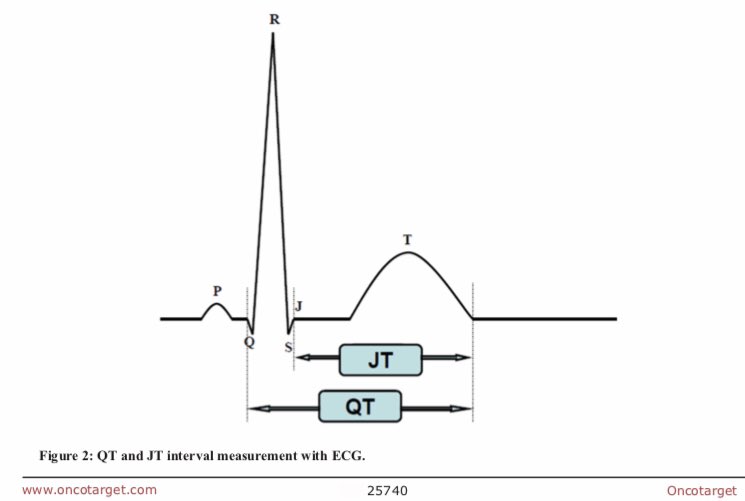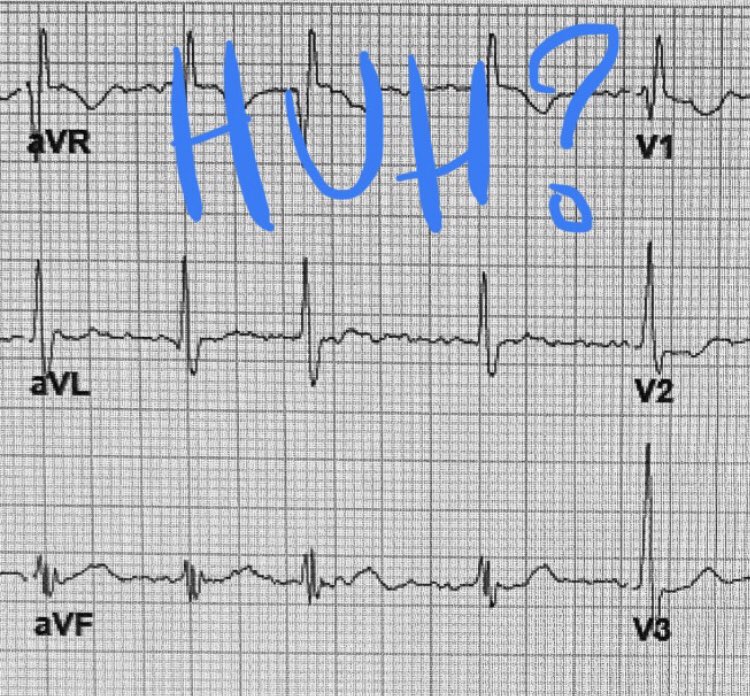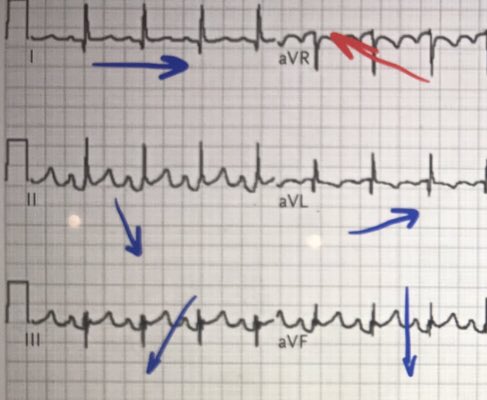This is an important and frequently encountered issue.
Thread.
1/
So then back to the question by @RebeccaEBerger , how do you interpret/account for this to see if there’s underlying DEpolarization impairment too?
5/
1. How much is the QRS prolonged by?
2. Subtract that from the QT (take away the irrelevant prolongation due to DEpolarization)
3. Then correct for heart rate as always.
6/
If not, or if particular concerns, you can refer to other resources or consult your friendly neighborhood QTologist.
7/
8/
sciencedirect.com/science/articl…
Sometimes finding the end of the TW can be tricky.
This should help:
11/
While we correct for heart rate to estimate degree of repol impairment, the risk of Torsades is actually ~ to the absolute QT, not QTc. Thus, tachycardia is protective, and bradycardia a risk. Take this into account when making close calls on meds.
12/
@ETSshow @jamshidbaheer @tightropetom @GIMaPreceptor @rwcorty @Mr_Warhel @PaulKunnath @Oantle
- QT includes QRS; when BBB or V-pacing, standard QT way overestimates risk
- By how much is QRS prolonged? Subtract that from QT. Correct for HR. This gives sense of “true” QTc.
- Bradycardia is a risk for TdP
Would appreciate more tips/expertise from #medtwitter !













